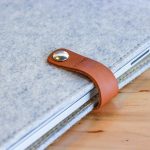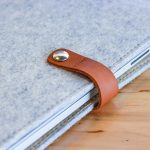Many people assume all fabrics labeled as waterproof actually are, but that’s not always the case. Testing a fabric’s waterproof capabilities at home can provide you with valuable insights. You can use simple methods to assess its performance and guarantee you’re making an informed choice. Curious about how to conduct these tests effectively? Let’s explore the steps you can take to determine if your fabric truly stands up to water.
Table of Contents
Key Takeaways
- Conduct a DIY water repellent test by misting water on the fabric and observing how it interacts with the surface.
- Check for absorption after a minute to assess how much water the fabric takes in.
- Perform a spray bottle test to see if water beads on the fabric’s surface instead of soaking in.
- Submerge the fabric in water for a few minutes to evaluate its ability to resist leakage.
- Wear the fabric in light rain to assess its real-world waterproof capabilities and note any dampness.
Understanding Waterproof Fabrics
When you think about waterproof fabrics, it’s vital to understand their unique properties and how they work. These fabrics are designed to repel water, keeping you dry in wet conditions.
They often feature a special coating or a membrane that prevents water from soaking through while still allowing moisture from your body to escape. This breathability is essential for comfort, especially during physical activities.
You’ll find that different materials vary in their waterproof capabilities, with some offering better protection than others. It’s also important to take into account factors like durability and weight, as these can affect your choice depending on your needs.
Hydrostatic Head Test Basics
To determine how waterproof a fabric truly is, you’ll often encounter the hydrostatic head test, which measures the fabric’s resistance to water pressure. This test quantifies how much water a material can withstand before it begins to leak. The results are usually expressed in millimeters; the higher the number, the more waterproof the fabric is.
Here’s a quick reference table to help you understand the hydrostatic head ratings:
| Rating (mm) | Waterproof Level |
|---|---|
| 0-1,500 | Water-resistant |
| 1,500-3,000 | Moderate waterproof |
| 3,000-5,000 | Highly waterproof |
| 5,000-10,000 | Extremely waterproof |
| 10,000+ | Ultimate waterproof |
DIY Fabric Water Repellent Test
Ready to test your fabric’s water repellency?
You’ll need a few basic materials, and I’ll walk you through the steps to conduct the test.
Afterward, we’ll evaluate the results to see how well your fabric holds up against water.
Required Materials Overview
For a successful DIY fabric water repellent test, you’ll need just a few essential materials.
First, gather a small piece of the fabric you want to test. It’s best to use a scrap to avoid damaging the main piece.
Next, have a clean spray bottle filled with water, which will simulate rain or moisture. You’ll also need a flat surface, like a table or countertop, to conduct the test.
Additionally, a stopwatch or timer can help you track how long it takes for water to bead up or soak in.
Finally, keep a towel handy to clean up any spills.
With these materials, you’ll be ready to determine the fabric’s waterproof capabilities effectively.
Test Procedure Steps
Before you plunge into the test, make certain your workspace is set up properly.
Lay your fabric flat on a clean surface, guaranteeing it’s free from any debris.
Take a small amount of water in a spray bottle and mist it lightly over one section of the fabric.
Observe how the water interacts with the material. If it beads up and rolls off, that’s a good sign of water resistance.
If the fabric absorbs the water, it’s likely not waterproof.
For a more thorough test, let the water sit for a minute before checking again.
Repeat this process on different sections to guarantee consistent results.
This simple method gives you a clear idea of your fabric’s waterproof capabilities.
Evaluation Criteria Explained
After testing your fabric’s initial response to water, it’s important to evaluate the results to understand its waterproofness better.
Here’s how you can assess the fabric effectively:
- Water Absorption: Check how much water the fabric absorbed. If it remains dry on the underside, it’s a good sign of waterproofness.
- Duration of Resistance: Note how long the fabric can resist water before it starts to seep through. Longer resistance indicates better waterproof qualities.
- Surface Beading: Observe if water beads up on the surface. If it does, that suggests a good level of water repellency, while flat wetness indicates poor performance.
Real-World Application Tests
While manufacturers may claim their fabrics are waterproof, real-world application tests are essential to verify these claims.
Start by exposing the fabric to water in a controlled setting, like using a spray bottle. Spray the surface and observe how the water beads up or soaks in.
You can also conduct a simple immersion test; submerge a small piece of the fabric in water for a few minutes. After removing it, check if any water has penetrated the material.
Another effective test involves wearing the fabric in light rain to see how well it protects you. If you notice any dampness, it mightn’t be as waterproof as advertised.
These practical tests give you a clearer picture of the fabric’s true waterproof capabilities.
Comparing Fabric Types
Understanding the effectiveness of waterproof fabrics requires a closer look at the various types available on the market. Each fabric type offers different levels of water resistance, so it’s essential to know what you’re dealing with.
- Gore-Tex: Known for its breathability and durability, Gore-Tex is a popular choice for outdoor gear. It keeps water out while allowing sweat to escape.
- Nylon: Often treated with a waterproof coating, nylon is lightweight and dries quickly. However, its effectiveness can diminish over time with wear.
- Polyester: Typically more affordable, polyester fabrics can also be treated for waterproofing. They’re less breathable than Gore-Tex but still suitable for casual use.
Interpreting Test Results
When you look at the test results for waterproof fabrics, you need to evaluate several key factors.
Water resistance ratings will give you a baseline understanding, while leakage identification points help pinpoint weaknesses.
Finally, absorption and recovery time can reveal how well the fabric performs under real-world conditions.
Water Resistance Ratings
Water resistance ratings play an essential role in determining how well a fabric can withstand moisture, so it’s important to grasp what these numbers mean.
These ratings usually range from 0 to 20,000 millimeters (mm) of water pressure, indicating how much water the fabric can resist before leaking.
Here’s what to keep in mind:
- 0-1,500 mm: Light water resistance, suitable for light rain or splashes.
- 1,500-5,000 mm: Moderate resistance, ideal for occasional heavy rain.
- 5,000+ mm: High resistance, excellent for prolonged exposure to wet conditions.
Leakage Identification Points
To effectively identify leakage points in fabric testing, you need to closely examine the results from your waterproofness tests. Look for specific areas where moisture may have penetrated, as these are essential to understanding your fabric’s performance.
Here’s a simple table to help you visualize potential leakage points:
| Test Area | Leakage Detected |
|---|---|
| Seam | Yes/No |
| Fabric Surface | Yes/No |
| Edges | Yes/No |
| Overall Integrity | Yes/No |
Absorption and Recovery Time
While evaluating the waterproofness of fabric, absorption and recovery time are essential metrics that reveal how well the material performs under wet conditions.
To interpret your test results effectively, consider the following:
- Absorption Rate: Measure how quickly the fabric soaks up water. A lower absorption rate means better waterproofing.
- Recovery Time: Observe how long it takes for the fabric to lose moisture after exposure. Faster recovery indicates a stronger resistance to water penetration.
- Surface Dryness: Check if the surface remains dry after drying the fabric. If you notice any dampness, it suggests the fabric isn’t fully waterproof.
Frequently Asked Questions
Can I Test Waterproofing Without Special Equipment?
You can absolutely test waterproofing without fancy gear! Just pour a bit of water on the fabric; if it beads up and rolls off, you’ve got a winner! Simple tests can reveal surprising results.
How Do Weather Conditions Affect My Test Results?
Weather conditions can considerably affect your test results. Humidity, temperature, and wind can influence how water interacts with the fabric, potentially leading to misleading conclusions about its waterproof capabilities. Always consider these factors when testing.
What Should I Do if My Fabric Fails the Test?
If your fabric fails the test, you can treat it with a waterproofing spray or wash-in product. Alternatively, consider using a different material designed for water resistance or return it for a better option.
How Often Should I Test My Waterproof Fabrics?
You should test your waterproof fabrics at least once a year or whenever you notice wear and tear. Regular checks guarantee they perform well, keeping you dry and protected during unexpected weather conditions.
Are There Any DIY Waterproofing Treatments I Can Use?
You can use DIY treatments like silicone spray or wax to waterproof fabrics. Simply apply the product evenly, let it dry, and test it out. It’s an easy way to enhance your fabric’s water resistance!
- Why Open-Weave Scrim Is the Secret to Stunning Event and Canopy Designs - June 26, 2025
- Creating Large-Scale Art Installations With Scrim Fabric - June 26, 2025
- Scrim Fabric in Upholstery: Understanding Its Use as a Backing Material - June 26, 2025







